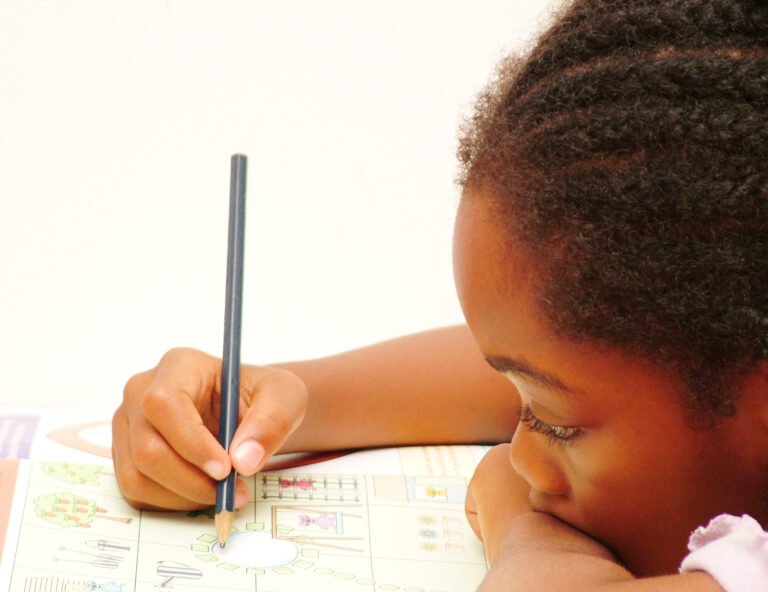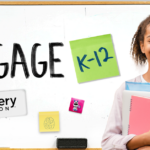By Vicki Davis, originally published in the Jan/Feb 2021 issue of Equity & Access
As the principal of Pike Road Intermediate School in Alabama, I’m part of an overall school culture that champions intellectual curiosity. All students are asked to take ownership of their learning and are inspired to think, innovate, and create.
Engagement is essential, and teachers are asked to customize instruction to meet individual students’ needs to ensure no gaps exist in a child’s knowledge. As a 1:1 school, we are continually looking at education technology to enhance the learning process. Yet, interestingly, I’ve noticed paper materials remain key learning methods in the successful advancement of our standards-based curriculum.
Before I became a principal, my special education background enlightened me to the tactile side of child learning. It stayed with me as my career developed, and it is something I believe is beneficial to all learning. When children have something tangible that they can hold in their hands, it gives them something to respond to as they select or write an answer down. The hands-on approach often makes learning more embedded in kids’ minds rather than merely responding to a computer or device.
The teacher benefits
When students have print materials in front of them, teachers have the freedom to be less conscientious of the student falling off task. The device-driven society that we live in today has made students experts in distraction. When a student is working on a computer, they are very adept at quickly and easily swiping away from an assignment to a video game or something they shouldn’t necessarily be watching.
We are a 1:1 school system, and it’s a real problem for us with students exploring on devices away from the assignment. When students have print materials in front of them, they are more likely to concentrate on the task at hand rather than having things that pull their attention online.
Forced remote learning
During the initial spring COVID closures, we did not take advantage of print material as best as we could have in virtual learning. When we closed our schools in March, teachers automatically went to Google Classroom to establish their lessons and provide instruction. But they also used materials from Ready Reading and Ready Math that they uploaded to Google Classroom, and parents could make copies. In retrospect, we could have done a better job of printing materials for families. It was such a scramble, and we did the best we could under the circumstances. We provided hotspots for families that didn’t have access. Most families had their 1:1 devices, and we made sure everyone had internet connections.
For the families who had issues with getting set up for online learning, we inquired about devices and Wi-Fi connectivity with a form over two weeks. We provided a schedule of staggered times that parents could drive to the school and be assisted by staff. Parents came to the school and waited in a carpool line format. Our team would meet them at their cars, asking, “Who are you? What is your child’s name? What devices are needed.” As for those parents that did not respond to our inquiry, we reached out by phone to follow up.
Observations and areas of research that show the benefits of print material
Print material allows students to work more effectively in small groups. Even though we are in the midst of COVID, and you need to be careful, I’ve noticed kids’ reactions in the classroom with a computer device being different than if they were creating a project with paper and pencil.
There is so much research about the adverse effects of screen time on students—social skills, attention issues, and more. The computer and the internet are wonderful advancements, and we often wonder how we ever lived without them. However, at the end of the day, when you are looking to educate children best, paper and pencil is at the top.
Sometimes parents aren’t as savvy about accessing online materials, so when you send home actual paper copies asking that the students practice with the materials, it’s more likely to be completed. Parents are more engaged to sit down and go over the materials with their children—one reason being, perhaps, that these materials feel familiar to parents from their own school experience. We’ve found that print materials help with parent communication and intervention, among other areas.
The need for more print materials
In the past, because we are an online 1:1 device school system, our school was not in the habit of purchasing print materials or curriculum. Established only five years ago, we are independently in control of pulling our standards and producing our curriculum. Before I came to Pike Road as a principal to start up the middle school, I had worked as a principal and curriculum specialist for a traditional school system with 21 schools.
When I came to Pike Road, it was daunting to try and put together a specific, sequential curriculum and hit the necessary standards. Recently, I was searching for some good science and social studies material to help teachers so that they didn’t have to rely on piecemealing materials all the time to put together a curriculum. Unfortunately, teachers are often asked to spend too much time searching for materials, taking up time that could be better used for interactive lessons. We are working on improving this area in our school.
When I came here, we did not have a good benchmark of assessment
When I arrived, I was alerted to i-Ready from an educator who had gone to a reading and math workshop. For the first time, parents who were in the school system for some time were able to see their child’s progress. They could see where their children were—what their deficits were, what their strengths were. We could identify and provide enrichment and intervention with learning paths. After that, I realized there were print materials in the Ready Reading and Math curricula that would be additionally helpful and last year, we went ahead with adding those elements.
There are always going to be kids who will learn under any circumstance. But that does not include every kid by a long shot. Having print and digital resources integrated into our curriculum has helped us identify and monitor students’ needs while providing intervention. Other programs were frankly not as comprehensive and were not aligned to standards. The curriculum aspects of previous programs were piecemeal at best.
It’s interesting that with all the online learning taking place, especially compounded by the pandemic changes in education, a mixture of paper materials with technology-based methods seems a perfect marriage. Hopefully, as things settle down and get back to more normalcy, educators, leadership, and parents can come together and share stories on how both paper materials and online learning played essential parts in the advancement of recent student learning.
 ABOUT THE AUTHOR
ABOUT THE AUTHOR
Vicki Davis is a veteran educator with a wide range of teaching experiences which includes teaching kindergarten through eighth grade as well as serving as adjunct professor for several years at the university level. She has been an administrator for the past seventeen years serving as program specialist and principal in an elementary, intermediate and middle school environment.
The American Consortium for Equity in Education, publisher of the "Equity & Access" journal, celebrates and connects the educators, associations, community partners and industry leaders who are working to solve problems and create a more equitable environment for historically underserved pre K-12 students throughout the United States.
- American Consortium for Equity in Educationhttps://ace-ed.org/author/admin/
- American Consortium for Equity in Educationhttps://ace-ed.org/author/admin/April 23, 2025
- American Consortium for Equity in Educationhttps://ace-ed.org/author/admin/
- American Consortium for Equity in Educationhttps://ace-ed.org/author/admin/







